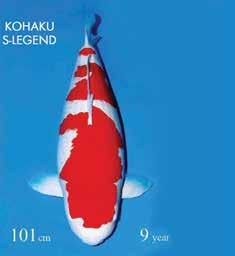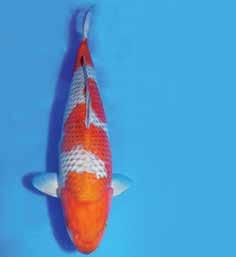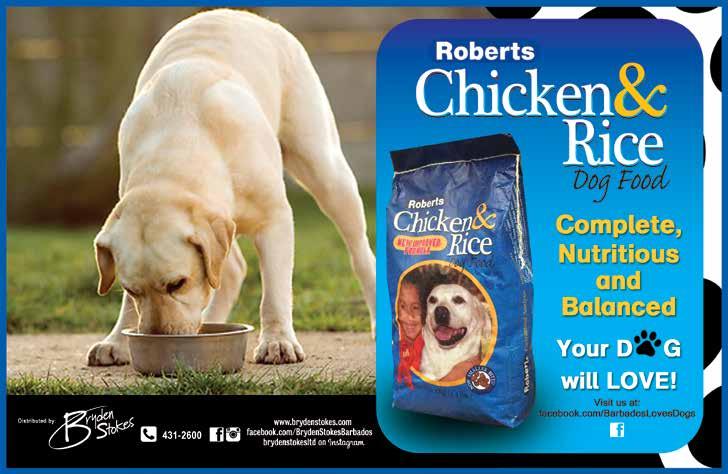
9 minute read
PETS, NOT PILLS
Building a Koi Pond
Written By: Mitchel Hird Part 2
Advertisement
So you have built your Koi Pond and things are about to get exciting, it is time to add life to your empty pond.
Before filling the pond, check all your plumbing connections are secure. If the pond is concrete ensure your Mason did a good job, make sure there are no holes or cracks. Clean and sweep out the pond as you don’t want to be scooping debris out of the water later. Wash out the pond with clean water, then drain this to waste and refill.
The cement used to build your beautiful new pond contains Lime, a strong alkali, it will seep out of the concrete, into the water and kill your new fish. Therefore concrete ponds need an extra step called “Leaching”. The concrete pond must be filled with water and allowed to stand for at least a week, longer is better. This allows the lime to come out of the new concrete and into the water. After leaching the pond, pump out the alkaline water and refill. After a day, test the pH. If the water is still very alkaline then repeat the leaching process for another week. Your local pond shop should be able to test your water if you take them a sample.
So now your pond is full, you will no doubt be very anxious to fill the pond with Fish, but now is the time for a little patience. This is harder than you might think, after so much time and effort everyone just wants to see their pond filled with fish… but this is potentially a costly mistake, because first you need BACTERIA!
Your pond pump and filter does two jobs, firstly it removes solids, just like a sieve. These are things like dust, fish waste, uneaten food etc. We call this “Mechanical filtration.” It is mainly to keep the water clear so you can see the fish. However the filter does a second, more important job, it removes the ammonia!
When you feed your fish they will excrete ammonia. If you have ever smelled a bottle of cleaning ammonia you know how pungent it is. Ammonia burns and damages living tissue, especially the delicate gills and skin of fish. Here is the interesting part, there are some special microscopic Bacteria that will take up residence in your filter and detoxify the ammonia. Without these useful creatures pond keeping would be almost impossible. But there’s a catch, the Bacteria take time to grow naturally and you only ever have enough to cope with the number of fish you have at any one time. When you add more fish the amount of ammonia excreted into the pond increases and it takes about six weeks for the bacteria to multiply to cope with the extra ammonia. If you add too many fish all at once the ammonia accumulates and can cause big problems. So in a brand new pond it’s important to add fish slowly, just add two or three to begin with. The best way is to gradually add fish over the coming weeks and months monitoring the ammonia with a simple test kit. This will ensure your pond will have a trouble free start.
Koi are a domesticated strain of Carp. First created by selective breeding in Japan hundreds of years ago. For avid enthusiasts every aspect of the fish is important, body shape, pattern and colour. The very best examples can fetch staggering amounts, upwards of US$1 million. These top quality Koi come exclusively from Japan where Koi farmers with generations of experience strive to create the most beautiful Koi. The truth is that this top end of the market is very small, partly because it is so difficult to breed these elite Koi. A Japanese breeder might work his entire life breeding many millions of Koi over a career and still not be fortunate enough to produce a single Koi of a World class standard.
The most expensive Koi ever sold at Auction for US$1.8Million

Just like breeds of Dog, there are specific patterns, over 200 types exist and each type is referred to by an exotic sounding Japanese name. The names and history behind Koi add to the fascination Koi keepers have for these captivating fish. Take for example the “Ochiba Shigure,” this is a grey koi with brown patches. The name means “Autumn leaves on the water” a Charismatic name for a fish! The name describes its pattern of brown “autumn leaves” that have fallen on to a grey “water” background.
There are over 200 koi varieties, pictured is an Ochiba Shigure

Despite the headline grabbing price tags at the top end of the Koi market, the truth is that most Koi bred in Japan cost approximately $100 to $200. As a result of the careful selective breeding by the Japanese, the Koi they produce grow bigger and maintain their shape, colours and patterns and usually improve with age.
That said, Koi are also bred in other countries like the USA and Israel. These are usually high volume/lower quality farms with koi destined for sale in Garden centres and pet shops. Even here in the Barbados there are back yard breeders growing their koi at home, or in cane ground ponds for sale. Whilst these fish might not be perfect they are colourful and often an affordable way to get started in the hobby.
Continued from Page 13
FEEDING
This is everyone’s favourite part. There are few things as relaxing as coming home after a hard day’s work, sitting next to your pond whilst watching your fish feed. It truly is a wonderful stress antidote, but spare a thought for how and what you feed your fish. The leading cause of fish death is over feeding, so don’t be tempted to feed too much as uneaten food fouls the water quickly. In the wild Carp are grazers, so their digestive system is adapted to eat little and often, two or three smaller feeds a day are better than one big feed.
A good tip is to use a measuring tub and only feed the Koi what they can eat in 2-3 minutes. Always try to use a quality food, poorer feeds often contain un-digestible “filler” ingredients or even worse by-products, these pass through the fish and pollute your water.
Above all don’t be tempted to use feeds not intended for Koi — Tilapia pellets, Dog and Cat feeds. These will lead to premature death and bad water quality. ONGOING CARE
As your collection of Koi grows so will your investment. People often underestimate the emotional attachment owners can develop with these fish that can live for decades. Koi often recognize their owners and will even hand feed.
Here are some pointers to make sure they stay healthy:
• Clean the filter regularly (as per manufacturers instructions). • Do at least a 10% monthly water change to remove dissolved waste products – old pond water is a great fertilizer for your plants! • Use dechlorinator when doing water changes. It’s cheap and will neutralize the damaging chlorine in Tap water. • Observe your fish - watch for unusual behavior or injuries.
Koi take very little care, but when there is a problem it’s best to deal with it promptly. Health issues can usually be treated if caught early. • As your fish grow make sure there is adequate oxygenation.
Bigger fish need more oxygen. • Overstocked ponds often suffer badly during power cuts.
Invest in a little portable generator just to keep the air pump running. • If you manually clean your filter, use old pond water, never wash the filter media with tap water as the Chlorine will kill the beneficial Bacteria.
So now you have a pond full of beautiful Japanese koi which will provide years of enjoyment as they grow and develop. You will be surprised how satisfying caring for these living jewels can be, whilst providing you and your family with a relaxing and beautiful water feature to enjoy.
For More Information on Koi Ponds. Please contact Mitch via his website http://www.caribbeankoi.com by email: info@caribbeankoi.com or phone +1 (246) 256 6617


Protecting Sea turtles
IN BARBADOS
How do I report a turtle activity or turtles in trouble?
Call the Turtle Hotline: (246) 230-0142
When do sea turtles nest in Barbados?
Most hawksbill turtles in Barbados nest during the peak season between mid-May through mid to late October. However, nesting has been documented in every month of the year.
The nesting season for leatherback turtles in Barbados is between February and July. The first record of green turtles nesting in Barbados was in 2005. It is currently believed that their nesting season is the same as that for hawksbills.
Are sea turtles protected?
As of 1998, the Government of Barbados enacted a total moratorium on all sea turtle harvesting. It is completely illegal to catch any species of sea turtle, or possess any turtle product (i.e. meat, shell, eggs) in Barbados. Penalties include fines up to $50,000 Barbados dollars and/or two years in jail. However, each country has its own laws, and in some places it is still legal to harvest sea turtles during certain times of the year.
Why are sea turtles threatened?
Hawksbill and leatherback sea turtles are Critically Endangered, while green turtles are Endangered. The primary cause is over-harvesting by man for the shell, meat and eggs. Tortoiseshell jewelry is made from the hawksbill shell, while canned turtle soup was once made using green turtle meat. declined due to over-exploitation. Population recovery is an extremely slow process. It is estimated that only 1 in every 1,000 hatchlings will survive to adulthood, which is not reached until 25-30 years of age. It is only then that turtles can begin to reproduce. A large number of turtles are also accidentally caught and drowned in fishing nets and in longline fishing gear.
Nesting beaches are now also under threat. Beachfront developments, including sea walls, buildings, and boulders, limit the spaces available for nesting females to deposit their eggs. This forces the turtles to nest in sub-optimal areas of the beach where entire clutches may be washed away by high tides. Introduced animals such as mongooses, domestic dogs and cats also can dig into nests, eating eggs or hatchlings.
Why should anyone care if turtles become extinct?
Sea turtles all serve an important role as nutrient transporters. They gather the nutrients they need at sea then come onto the beach to nest. When nutrient-rich eggs do not hatch or are eaten by land predators (crabs, etc.), these nutrients pass into land-based ecosystems. Each species also plays a specific role to protect our marine environment:
• Hawksbill turtles help to keep coral reefs healthy by feeding on sea sponges which, if left unchecked, would overgrow and choke reefs. • Green turtles graze on sea grasses making nutrient-rich new growth available to other grazing species such as the fish caught in the near-shore pot and net fisheries. • Leatherback turtles help to keep pelagic fish populations healthy by controlling the abundance of jellyfish which, if left unchecked, would decimate populations of fish larvae.



